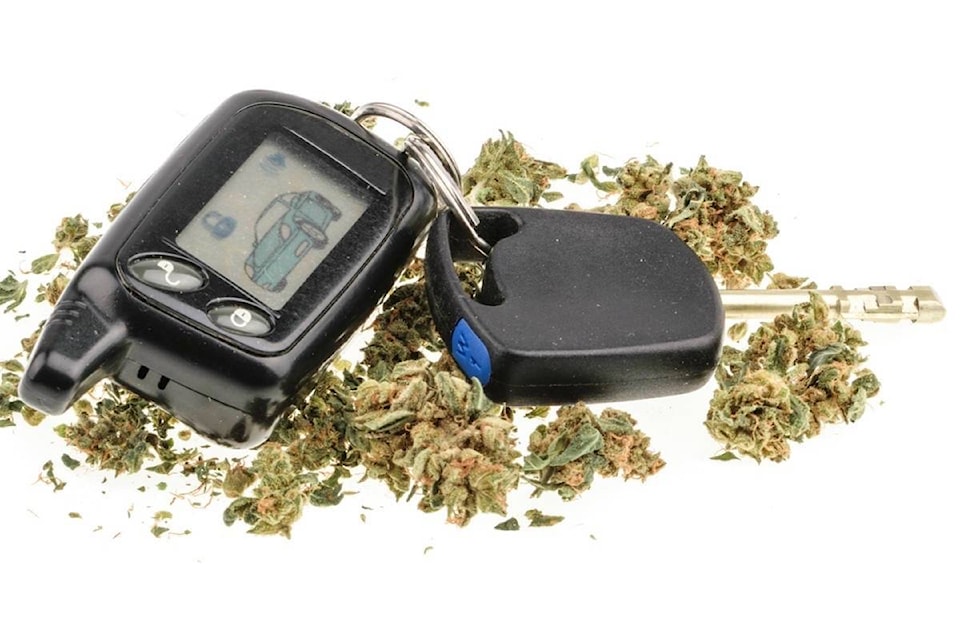When the recreational use of cannabis became legal in Canada on Oct.17, concerns were raised that drug-impaired driving would become an issue on the nation’s roadways.
That fear has not translated into reality in Sooke with no charges laid yet for drug-impaired driving, said RCMP Sgt. Clayton Weibe.
But it’s not to say that the concern was not well-founded or that there are no issues surrounding drug impaired enforcement.
RELATED: Victoria man challenges charges
The National Institute on Drug Abuse says marijuana significantly impairs judgement, motor coordination and reaction time. Studies have shown a direct relationship between blood THC concentration and impaired driving ability.
In reaction to the liberalized laws,Mothers Against Drunk Driving has sounded the alarm, and in April B.C.’s top cop, Solicitor General Make Farnworth expressed frustration at Ottawa’s slow pace in selecting roadside testing equipment that would be able to detect marijuana-impaired drivers.
Now, although the federal government has approved the use of the Drager DrugTest 5000 for roadside testing, many police detachments have not embraced the technology in the face of studies that showed the device reported false positive results up to 14.5 per cent of the time. There have also been indications that the device does not function properly at low temperatures.
There are also questions about what level of THC in the system leads to impairment. It took years to settle on the .08 blood alcohol level as a measure of impairment. Cannabis is a bit more complex. It stays in the system longer and the ug/L (micrograms/litre) level that denotes impairment has not been set.
In Sooke, Weibe said the detachment does not use the Drager device and, instead, relies on the traditional Standardized Field Sobriety Test (SFST). He added that no ug/L level has been determined by the federal government as being too much to drive.
“Some of our officers are specially trained in drug detection. If there is evidence of impairment they still can demand an SFST, and depending on the results of that, they could be taken in for a Drug Recognition Expert (DRE) Evaluation,” Weibe said..
RELATED: penalties could bar newcomers from Canada
The STFT involves the drivers being examined for horizontal gaze nystagmus (the eyes make repetitive, uncontrolled movements), the one-leg stand and the walk-and-turn tests.
If a driver fails the SFST they can be taken into the station where a DRE will conduct a 12 step procedure that can culminate with a demand for a urine, oral fluid or blood sample.
The problem is that, while the RCMP claims that the SFST “has undergone a number of field validation studies” it continues to be criticized as being subjective and inaccurate in nature.
In a 2007 peer-reviewed article published in by the American Psychology-Law Society/Division of the American Psychological Association, it was concluded that “the SFST empirical research finds many deficiencies and unanswered questions. The SFSTs are not validated as tests of impaired driving or as indicators of loss of normal physical functioning.”
Despite these difficulties, the Sooke RCMP is soldiering on to keep the roadways safe, and Weibe was pleased to report that, so far, legalization has not translated into an uptick in drug-impaired driving.
“I just want to remind people that the bottom line is that it’s just not worth it. The punishments for drug-impaired driving are the same as those in place for alcohol and drivers should be aware that they can be stopped, tested and charged,” said Weibe.
“The best idea is to just not do it. If you have consumed cannabis through smoking, edibles or any other method, don’t drive.”
mailto:tim.collins@sookenewsmirror.com
Like us on Facebook and follow us on Twitter
